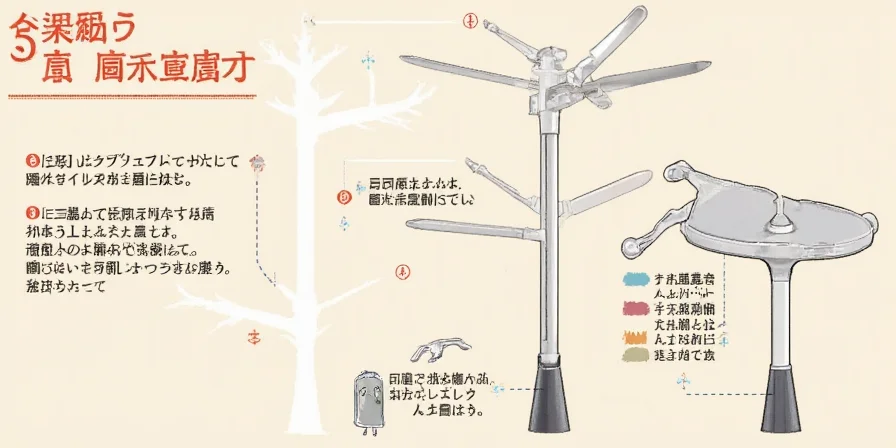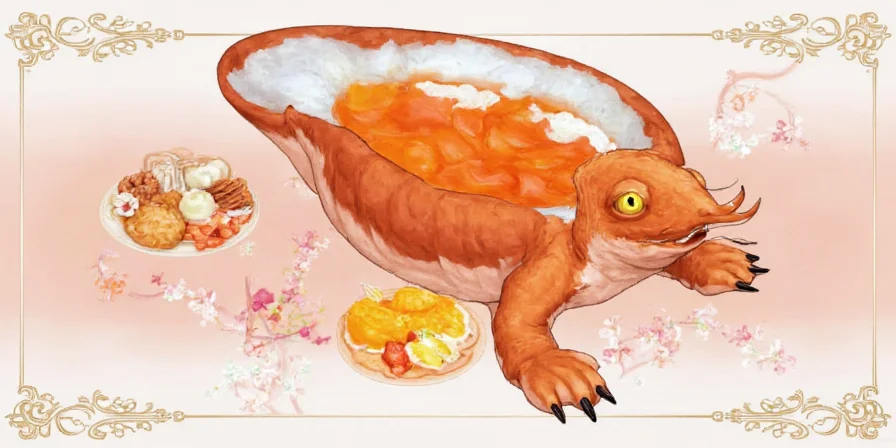If you've ever savored fresh spring rolls or a steaming bowl of pho, you know Vietnamese cuisine thrives on vibrant, herb-driven complexity. This guide delivers actionable insights for home cooks and culinary enthusiasts seeking authentic Vietnamese flavors through five essential herbs. We move beyond basic descriptions to explore regional usage patterns across Vietnam—like how Central Vietnamese kitchens use lemongrass more sparingly than Southern regions—revealing how terroir impacts flavor intensity. Discover precise culinary applications, practical growing techniques for non-tropical climates, and subtle distinctions professionals use to avoid common substitution mistakes. Whether you're crafting your first pho or elevating restaurant-style dishes, this resource provides the nuanced understanding needed to harness each herb's full potential.
Table of Contents
- Why Vietnamese Herbs Transform Dishes
- 1. Thai Basil (Húng Quế) – The Bold Rebel
- 2. Coriander (Ngò Gai) – The Citrusy Controversialist
- 3. Lemongrass (Sả) – The Zesty Mood Booster
- 4. Mint (Húng Lủi / Húng Chanh) – The Cool Refresher
- 5. Sawtooth Herb (Ngò Ôm) – The Secret Flavor Enhancer
- Bonus Tip: Crafting Authentic Herb Platters
- Frequently Asked Questions
- Conclusion: Building Your Herb-Forward Kitchen
Why Vietnamese Herbs Transform Dishes
Vietnamese cooking achieves balance through fresh herbs served raw in generous portions—not just as garnishes but as central flavor components. Unlike Western cuisines where dried spices dominate, Vietnam's herb-centric approach delivers immediate aromatic complexity. This technique creates dynamic texture contrasts and temperature play (cool mint against hot broth) that define the cuisine's sensory experience. Crucially, regional variations matter: Northern kitchens favor delicate cilantro stems while Southern tables pile on bolder sawtooth herb. Understanding these nuances prevents common mistakes like using Italian basil in pho—a substitution that flattens the intended flavor architecture.

1. Thai Basil (Húng Quế) – The Bold Rebel
Thai basil's resilience to high heat makes it indispensable for wok cooking, where Italian basil would wilt into bitterness. Its purple stems indicate higher anthocyanin content, contributing peppery notes that cut through rich meats. Northern Vietnamese cooks often use it sparingly in noodle soups, while Saigon chefs layer it generously in bánh xèo (Vietnamese crepes).
- Flavor profile: Anise-like base with black pepper finish, minimal mintiness
- Main use: Stir-fries (bò nhúng, cá kho), grilled pork rice (cơm thị tàng), dipping sauces
- Pro tip: Freeze whole stems in olive oil cubes for off-season cooking—thaw directly into hot woks

| Herb Type | Flavor Signature | Regional Preference |
|---|---|---|
| Thai Basil | Peppery anise | South Vietnam (abundant) |
| Sweet Basil | Mild licorice | North Vietnam (soup garnish) |
| Holy Basil | Spicy clove | Rare in Vietnam (Thai specialty) |
2. Coriander (Ngò Gai) – The Citrusy Controversialist
Discard generic cilantro advice—Vietnamese cuisine specifically uses the leafy crown and tender stems for their bright top notes, reserving mature stems for broth infusions. Coastal regions like Hồi An add whole sprigs to seafood soups, while Mekong Delta cooks finely chop roots for marinades. This strategic layering creates flavor depth impossible with uniform chopping.
- Flavor profile: Lemon-zest aroma with peppery stem notes
- Main use: Pho garnish, gòi cuốn (spring rolls), bún thị nước lễ (noodle salads)
- Pro tip: Store stems upright in water with leaves covered by a perforated bag—extends freshness by 72 hours

3. Lemongrass (Sả) – The Zesty Mood Booster
Regional differences define usage: Hanoi chefs mince the tender core for delicate broths, while Ho Chi Minh City cooks pound entire stalks for fiery marinades. The key is extraction technique—bruising releases citral oils gradually, while mincing creates explosive citrus bursts ideal for dipping sauces. Note that younger stalks (pale lower third) offer subtlety; mature stalks (green upper sections) deliver aggressive brightness.
- Flavor profile: Citrus top notes with grassy undertones
- Main use: Grilled meats (thị nuống sả), seafood hot pots, herbal teas
- Pro tip: Freeze bruised stalks in broth ice cubes—adds flavor without fibrous bits

4. Mint (Húng Lủi / Húng Chanh) – The Cool Refresher
Vietnam distinguishes two mints with distinct roles: Húng Lủi (common spearmint) cools noodle soups, while Húng Chanh (Vietnamese mint) withstands heat in bánh xèo fillings. Central Vietnamese chefs uniquely pair Húng Chanh with chili in muối tạo (salted plum drinks) to balance heat—a technique rarely documented outside Vietnam.
- Flavor profile: Spearmint—clean coolness; Vietnamese mint—citrus-tinged sharpness
- Main use: Spring rolls, grilled pork rice (cơm thị heo), salted lime drinks
- Pro tip: Grow Vietnamese mint hydroponically—thrives in humid kitchens without soil

5. Sawtooth Herb (Ngò Ôm) – The Secret Flavor Enhancer
Rarely featured outside Vietnam, this herb's jagged leaves pack triple the intensity of cilantro. In the Mekong Delta, cooks use it as a primary green in fish soups (canh chua), while Northern chefs deploy it sparingly in congee. Its potency comes from undecylenic acid—a compound that amplifies umami in seafood. When unavailable, combine culantro with crushed perilla seeds for approximation.
- Flavor profile: Cilantro on steroids with green onion sharpness
- Main use: Seafood dishes, herbal congees, herb platters
- Pro tip: Blanch for 10 seconds to mellow intensity while retaining texture

Bonus Tip: Crafting Authentic Herb Platters
Authentic platters balance temperature, texture, and aroma activation. Start with cooling elements (mint, fish mint) at 6 o'clock, move clockwise to pungent herbs (sawtooth, perilla), ending with citrus accents (limes, chili). Never stack—lay herbs flat to prevent bruising. In coastal regions, add shredded banana blossom for crunch; in highlands, include wild betel leaves for earthiness. The goal: each bite should evolve from cool to spicy to bright.
Pro platter formula:- Cooling base: Mint (2 types), fish mint
- Texture layer: Bean sprouts, shredded banana blossom
- Flavor drivers: Sawtooth herb, perilla, cilantro
- Aroma finishers: Lime wedges, bird's eye chilies

Frequently Asked Questions
Can I substitute Thai basil with Italian basil in pho?
No—Italian basil lacks the peppery resilience needed for broth immersion. Use sweet basil as a last resort, but add it only when serving to prevent bitterness. For authentic results, seek Thai basil at Asian markets (labeled rau quế).
How do I store sawtooth herb to maximize freshness?
Treat it like cut flowers: trim stems, place in 1" water, cover loosely with a plastic bag, and refrigerate. Change water daily. For long-term storage, blend with oil and freeze in ice cube trays—thaw directly into hot dishes.
Why does Vietnamese mint work better than regular mint in hot dishes?
Vietnamese mint (Húng Chanh) contains higher menthol oxide levels, making it heat-stable. Regular mint's menthol breaks down above 140°F, turning bitter. Always use Vietnamese mint for cooked applications.
What's the most common herb platter mistake home cooks make?
Over-packing herbs prevents proper layering. Authentic platters use exactly seven components arranged radially. Start with mint at the bottom, build height with sturdier herbs like perilla, and place delicate cilantro on top—never mix randomly.
Conclusion: Building Your Herb-Forward Kitchen
Mastering Vietnamese herbs requires understanding their regional roles and physical properties—not just flavor profiles. By recognizing how climate affects potency (coastal herbs taste brighter than highland varieties) and using technique-specific preparation (bruising vs. mincing), you unlock authentic complexity. Start with Thai basil and lemongrass for foundational dishes, then experiment with regional combinations like Central Vietnam's mint-chili pairing. Remember: freshness comes from proper storage, but brilliance comes from strategic layering. Equip your kitchen with these five essentials, and you'll move beyond imitation to authentic Vietnamese flavor architecture.
Key takeaway: Treat herbs as dynamic ingredients with terroir-driven variations, not static flavor elements. Your next pho bowl will thank you.











 浙公网安备
33010002000092号
浙公网安备
33010002000092号 浙B2-20120091-4
浙B2-20120091-4